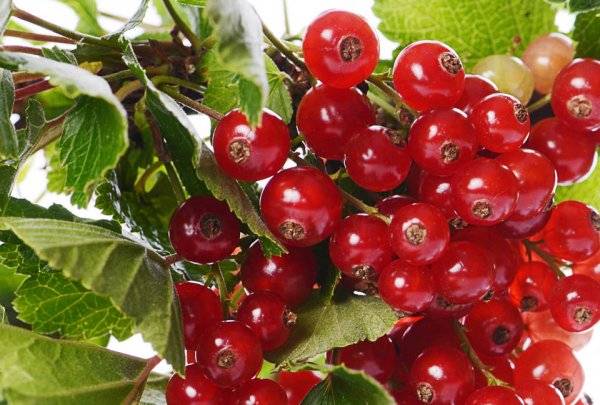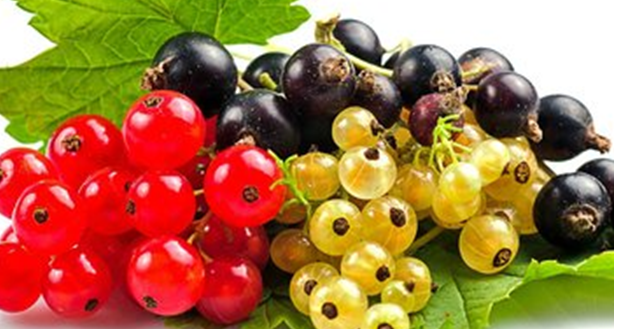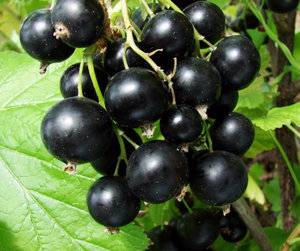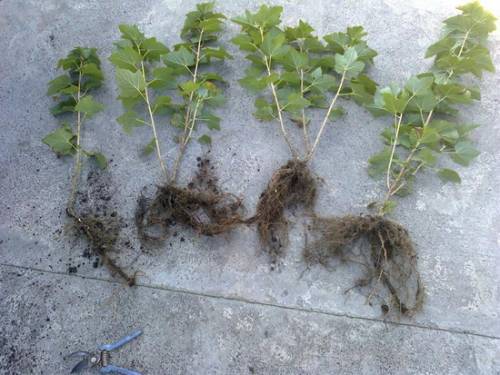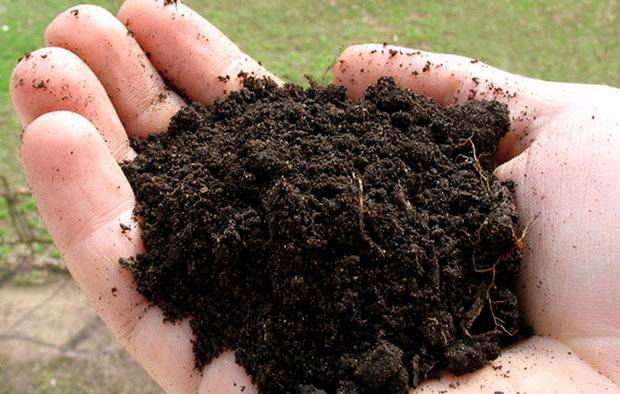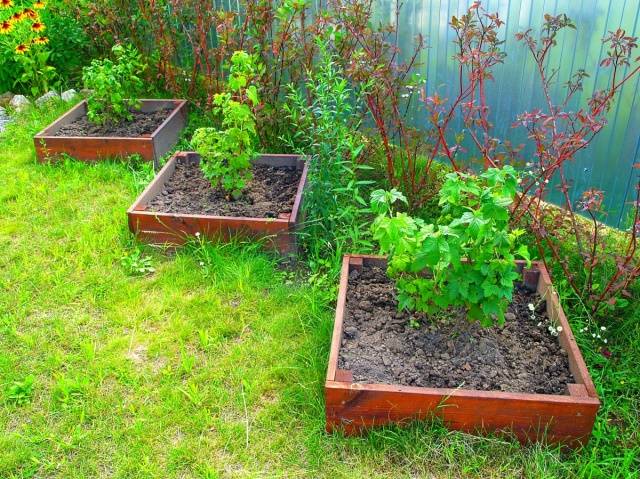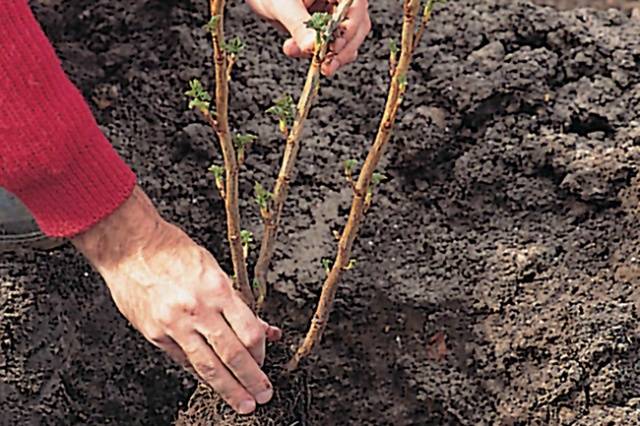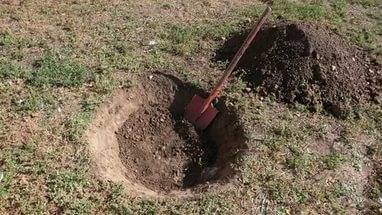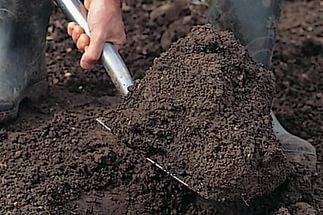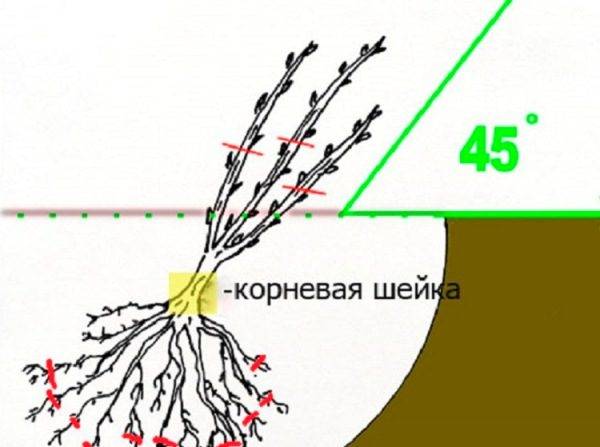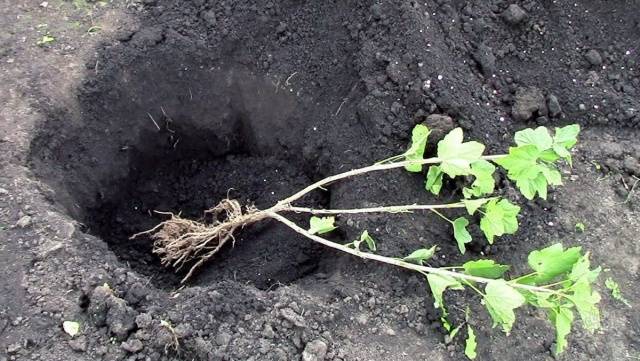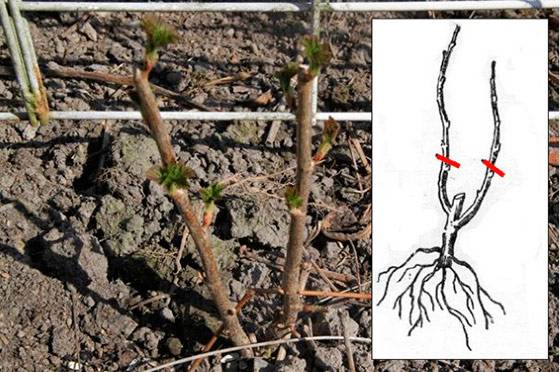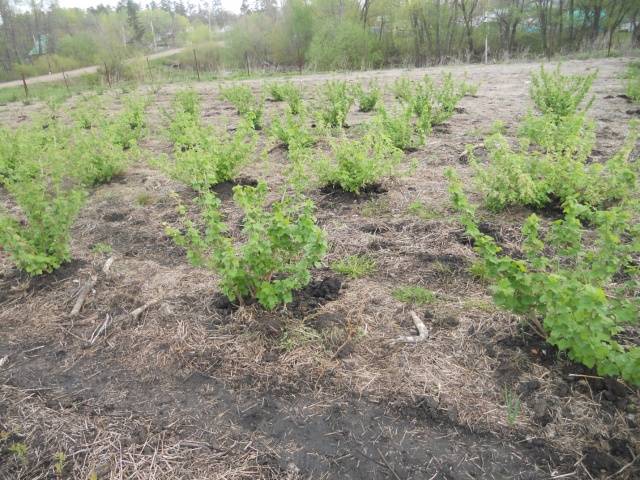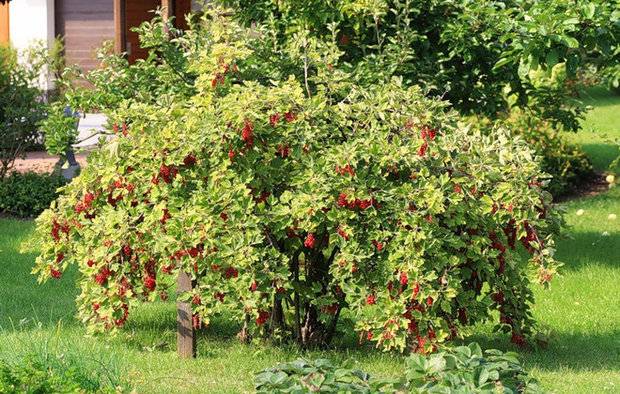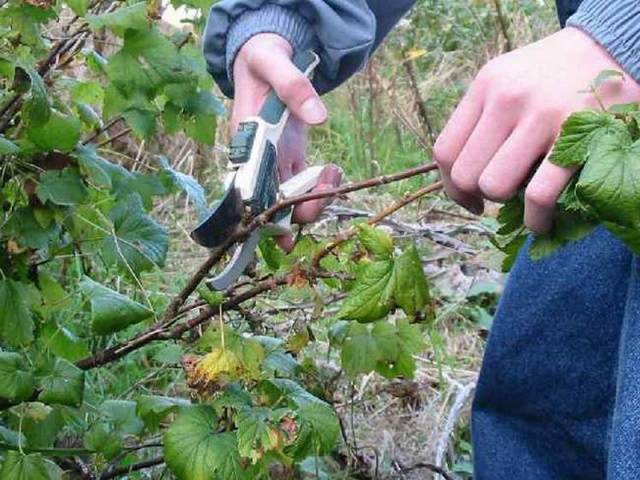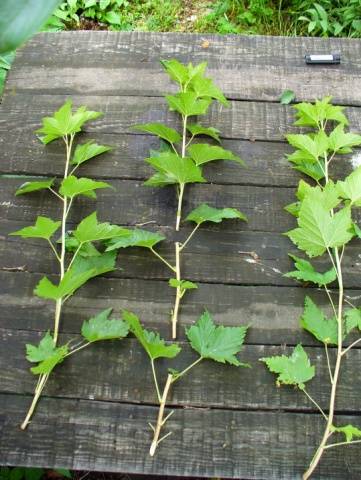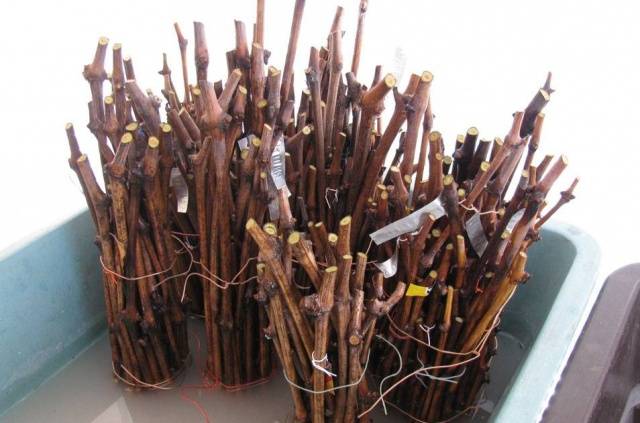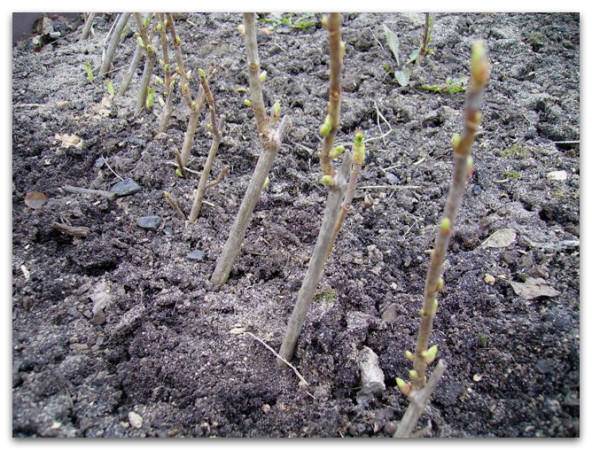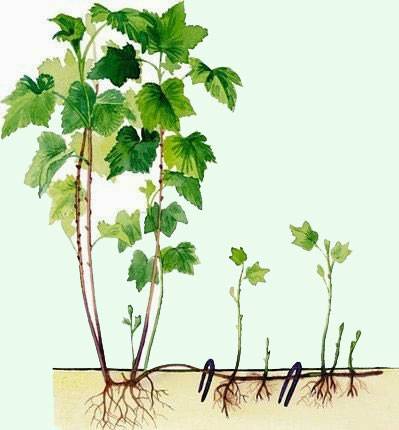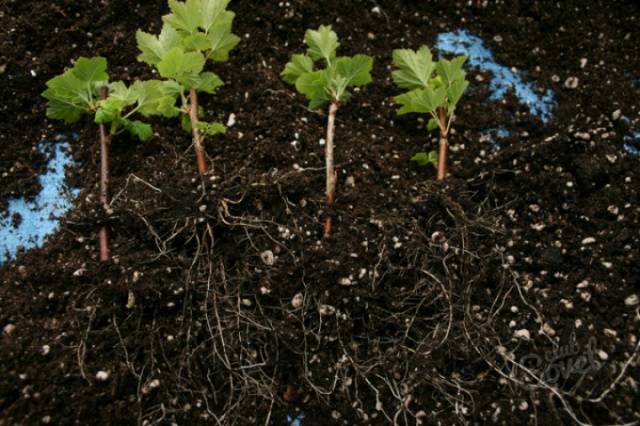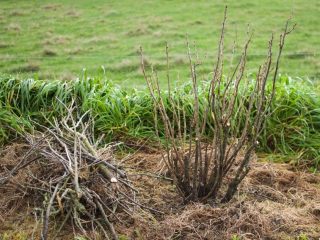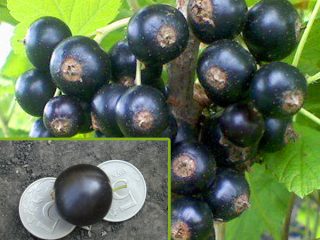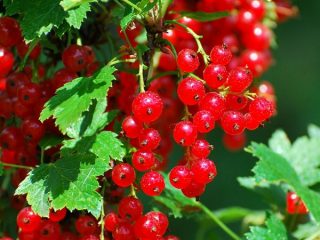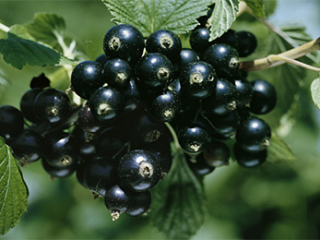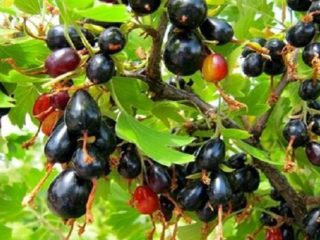Content
Currants... This fruit and berry shrub is found in almost every garden plot. And it is not surprising that she is so popular. The berry contains a huge amount of vitamin C, and the leaves have excellent diaphoretic and anti-inflammatory effects. And many summer residents naively believe that after harvesting all the work is completed, and they can relax peacefully until spring. However, it is not. The ideal time has come to expand the range of fruit trees and berry bushes. And currants are no exception. With the proper skill, planting currants in the fall does not cause any particular difficulties. In this case, the seedlings have time to take root. In the spring, excellent shoots will emerge from the seedlings, and in a year you can already expect the appearance of fragrant berries.
For beginners, the process of preparing and planting currants may seem too complicated and confusing. But in reality this is not the case at all. You will learn how to plant currants correctly from this article.
Why is it preferable to plant currants in the fall?
Despite the fact that the active sale of seedlings begins with the arrival of spring, experienced gardeners, knowing the characteristics of the growth and development of black currants, still prefer to carry out planting work in the fall. And there are several important reasons for this, which affect not only the development of seedlings, but also the quantity and quality of the harvest.
- With the arrival of spring, currant buds swell and bloom very early. The favorable period for planting is very short, only a few days. Due to weather conditions and a lot of work on the plot, this moment is easy to miss.
- When you plant currants in the spring, you disrupt the natural vegetative processes occurring in both the underground and above-ground parts of the plant. It takes a long time for seedlings to adapt to a new place. Even a slight delay in development affects the flowering of currants and, accordingly, their fruiting. Therefore, autumn is the most favorable period for planting red, white or black currants.
- Spring transplantation is also dangerous because weakened seedlings will not be able to provide adequate resistance to diseases and pests. Experienced gardeners claim that currant bushes in this case often “get sick” and require more care and attention.
- Another benefit of fall planting is giving the roots the time they need to establish. By spring, the root system will be fully formed.
- By planting currants in the fall, you create ideal conditions for the bushes to grow actively. By spring, the loosened and dug up soil will be well compacted around the roots.
Before planting currants in the fall, you need to know the rules and timing of planting, as well as what methods exist for planting these crops.
Optimal timing for planting currants in the fall
There are no clearly established deadlines for planting currant seedlings. On average in Russia this period lasts from the beginning of September to the end of October. The main factor for determining the date when it is time to plant currants is regional affiliation. In the north of the country, they try to finish all work by mid-September, but in the south they are in no hurry to plant until mid-October. The approaching frosts are important when determining the time for planting currant bushes. The roots need at least 3-4 weeks to strengthen and take root. If you plant seedlings too early, many young shoots will appear before frost sets in. We must try to prevent their appearance in the autumn. Late planting in the fall of either red or black currants is also fraught with not very pleasant consequences - the bushes will not have time to take root and will die when the temperature drops. So when planning planting work, you need to focus solely on the weather conditions and climate characteristics of your region.
How to choose the right currant seedlings for planting
More than 90% of success depends on the correct approach to choosing planting material.Therefore, try to pay attention to every little detail when purchasing currant seedlings. At the slightest suspicion, a low-quality or diseased plant should be put aside. Only high-quality seedlings without damage or signs of rotting are suitable for planting.
You should also pay attention to the age of the planting material. Ideal for planting are young, no older than one year, bushes with 1-2 shoots.
When choosing seedlings, carefully examine the blackcurrant roots. Young seedlings should have a fibrous root system with a large number of small and soft roots. In mature bushes, the roots are more elastic and rigid.
If your choice when purchasing fell on seedlings that are more than a year old, then be prepared for the fact that such bushes take much longer to take root. To make the process of adaptation and engraftment go smoother and faster, you need to take careful care O proper planting and subsequent care of seedlings.
It is better not to purchase seedlings that are damaged, have broken branches or the root system is not in the best condition. It is important to remember here that the miser pays twice.
How to properly store currant seedlings until spring
What to do if circumstances are not in your favor? The seedlings were purchased late, there is no way to go to the dacha, the autumn rains are heavy or there are other urgent matters? If there is the slightest doubt that you do not have time to plant the planting material according to all the rules and in compliance with the deadlines, it is better to save them until spring.
To do this, experienced gardeners recommend burying the purchased currant bushes in the garden or on the plot until spring. They must be placed in a strictly horizontal position. And in the spring, plant them in the ground.Before planting, it is advisable to immerse the seedlings in water for 2-2.5 hours so that the roots absorb as much moisture as possible.
Choosing a place to plant currants
Many gardeners approach choosing a place to plant currants without much diligence, believing that they will grow in almost any corner of the garden. This is true. Currant bushes will grow anywhere, but the harvest will be meager. Therefore, it is important to choose the right place for currants so that you do not have to replant the bush in the future. So, what does this garden crop like and dislike?
- Currants love medium loamy and heavy loamy soil.
- Currant is a moisture-loving shrub. Therefore, it is advisable to choose low-lying areas for planting. However, in wetlands, as well as where underground soils are located too close to the soil surface, seedlings should not be planted. Excess moisture will cause rotting and diseases of the root system.
- In order for the bushes to please you with a bountiful harvest in the summer, you should choose a sufficiently lit place for planting. If the shrub is planted in partial shade, the berries will be small and sour, and their number will only decrease every year.
- Black currants also do not like strong, piercing winds. Therefore, an open landing site is also not suitable. An excellent place for it would be the area between fruit trees or along the fence.
Preparing the soil for planting currants
The yield of currants depends not only on compliance with the rules of planting and care.The quantity and quality of the future harvest will make you very happy if you approach the process of preparing the soil for currants with full responsibility. It is necessary to prepare the ground for planting currant seedlings in advance, approximately 3-4 weeks before the start of planting work.
Currant bushes are very fond of being fertile, fertilized soil. Therefore, the area must be cleared of weeds in advance and fertilized well. Not earlier than a month before planting, mineral and organic fertilizers are applied to the soil per 1 m²:
- Superphosphate – no more than 50 g;
- Potassium sulfate – no more than 25 g;
- Humus or compost – 5 kg.
The cleaned and fertilized area needs to be dug up to a depth of 20-25 cm. There is no need to loosen the soil more than the bayonet of a shovel. The roots of young seedlings are not too long.
It is better to plant currants in a prepared area after some time has passed, when the soil is slightly compacted and saturated with moisture. The minimum rest period should be at least 3-4 weeks.
The author of the video will tell you when and how to plant currants correctly, as well as how to avoid mistakes:
Step-by-step instructions for planting currants
In order for the autumn work of planting currants to be successful and during the next season you will see the fruits of your labors, it is important to know how to plant currants correctly and follow some recommendations from experienced gardeners:
- Level the area where you are going to plant currants. Carefully level out all the holes and bumps. They will subsequently interfere with you when planting and caring for seedlings.
- Planting holes or trenches for planting should not be dug too deep. 20-25 cm in depth will be quite enough. But the width and length depend on the age of the currant bush. If the seedlings are two years old, then the hole for planting currants needs to be spacious - approximately 40 X 40 cm. For annual bushes, 30 X 30 cm will be enough. It is important that the root system in the planting hole is located freely. The roots should not be allowed to become crumpled or crushed.
- If groundwater is located too close to the surface of the earth, a drainage layer should be laid at the bottom of the planting hole.
- The distance between planting holes depends on the variety and type of shrubs, as well as the method of cultivation. For planting black currants, the distance can vary between 1.5-2 m between bushes. But red and white currants have longer and spreading branches, so the distance between them should be at least 2.5-3 m. If you plan to grow currants on trellises, then the distance between seedlings is 0.5-0.7 m .
- The bottom of the hole or trench is filled 1/3 with compost or rotted manure. For good nutrition of the root system, you can add 1-2 handfuls of wood ash.
- Carefully inspect the currant bushes. The branches should be intact, the roots should be moist, but without signs of rotting. Roots that are too long (more than 30 cm) can be trimmed. If the planting material is not in doubt, it can be planted.
- Currant seedlings are planted at an angle of 45˚ relative to the soil. This rule applies to ordinary garden varieties. In this case, with the onset of spring, shoots will grow from the root. The currant bush will grow in width, which will ensure high yields in the future.
- Standard varieties of shrubs must be planted strictly vertically.
- Gently spread the roots along the bottom of the trench or hole. They should be freely located throughout the pit. If the hole is small and the roots are cramped in it, it is better to slightly increase the recess.
- The root collar must be deepened 8-10 cm into the soil. Planting black currants In the fall, this method will allow young bushes to adapt faster. And also before the onset of frost, the currants will have time to take root well and build up the root system.
- Fill the hole or trench with soil, while following the recommendations regarding the angle of inclination of the seedlings.
- Water the seedlings generously. At least one bucket of water should be poured under each planted bush. To prevent the root collar from being exposed when watering, you should make a small depression around the bush, 3-4 cm deep and 15-20 cm wide for watering. In this way, you will prevent the soil from being washed away around the currant seedlings. In this case, the water will not spread.
- Immediately after planting it is necessary to prune. Each branch is pruned so that there are at least 4-5 buds above the surface of the ground. Pruning seedlings in the fall immediately after planting helps currants grow additional roots before winter. With a well-developed root system, numerous strong shoots will appear in the spring. It is not advisable to leave pruning until spring. Since the root system in this case will be very weak, and this, in turn, will immediately affect fertility.
After planting is completed in autumn, the soil around the seedlings should be mulched with dry leaves, peat, moss or straw. This procedure will not only help preserve the moisture that the bushes need so much after transplantation, but will also protect young currants from frost.
Planting red currants in the fall is not much different from black currants. It is only important to take into account that red and white currant bushes are much wider and larger. Therefore, when planting, it is better to make the distance between these seedlings larger so that in the future you do not have to replant them.
How to grow currant seedlings yourself
Despite the fact that seedlings are the most popular planting material, currants can be planted in two other ways: cuttings and layering. In this case, you need to find the variety of currant that you like and grow seedlings from it yourself. This can be done by cuttings and layering. What is the difference between these concepts?
Both methods are ideal if the original currant bush grows on your personal plot, and you want to additionally plant a few more bushes to increase the amount of harvest.
But if you want to plant the same variety of currants as your neighbors or friends, then it is better to use cuttings.
Planting currants with cuttings
Buying seedlings is a very risky business. Even if you follow all the rules for planting and caring for currants, the result can be disastrous. You should only purchase young bushes from those sellers you trust, or in special nurseries, where each plant is under the constant supervision of professionals.But what if there are no trustworthy sellers, and nurseries are too far away? In this case, you can grow seedlings yourself. All you need for this is a currant bush of your choice, pruning shears or garden shears and desire.
- In order to properly prepare cuttings, you need to figure out which branches you need to cut them from. After all, the choice of material determines how quickly and well the cuttings are accepted, as well as the yield of future bushes. Annual currant shoots are ideal for cutting material.
- It is best to harvest woody cuttings in the fall. The ideal time is the second half of September. In spring, shoots are just beginning to actively grow, and suitable material must be taken from those shoots that have already reached their peak in growth. Branches that are too young are not suitable for this purpose.
- You need to cut the material exclusively from strong and healthy currant bushes, taking into account the volume and taste of the crop. You need to select shoots for cutting cuttings based on their length and diameter. The thickness of the branches should be at least 0.6 cm and the length at least 15-20 cm.
- To cut the material, use only clean and sharp tools. With a dirty pruner you will cause irreparable damage to both the main currant bushes and the cuttings. When using blunt instruments, the survival rate of future planting material is significantly reduced.
- Each cut shoot can be divided into several cuttings. It is important that each of them has at least 4-5 leaves. The leaf blade of the two lower leaves is cut off in half or completely. Leaf cuttings must be left behind.
- Make even cuts at right angles: at the lower end of the cutting no more than 0.5 cm from the last bud, at the upper tip you need to retreat 0.7-1 cm from the outermost leaf.
- After you have cut a sufficient number of cuttings, they need to be placed for a day in a special solution that promotes the active growth of the plant root system. It is important to note that only the lower parts of the shoots should be immersed in the solution, no higher than two buds from the lower cut. In the absence of a composition that accelerates the growth of the root system, you can put the cuttings in ordinary water for a day.
- Cuttings should be planted according to the general rules for planting currant bushes, not forgetting the angle of inclination of 45˚ relative to the surface of the earth. There is only one difference: the cuttings need to be buried in the ground so that the two upper buds remain above the ground. In this case, the distance between cuttings should be at least 10-15 cm, row spacing - 45-50 cm.
- Don't forget about abundant watering.
If, after planting is completed, there is intense heat, be sure to take care of the planted cuttings. They need to create shade with gauze or cloth, and also do not forget about regular watering. When the ambient temperature drops, mulch the currant cuttings so that they do not die when frost occurs. In the spring it is necessary to prune and leave future seedlings until autumn. In the second half of September, excellent planting material will grow on your site, which can be planted in a permanent place.
You will learn more about planting currants using cuttings from the following video:
Planting currants with horizontal layering
This method of propagating currant bushes, like the previous one, is simple and accessible to every gardener. It differs only in that the main bushes, from which currants need to be planted, must be no younger than 2 and no older than 5 years.
In the spring, as soon as the soil has thawed, but the buds on the currants have not yet blossomed, the soil under the bush needs to be loosened and fertilized. Shallow trenches are made from the bush. The direction of the grooves should be the radius of a circle, the center of which is the currant. Shoots are placed in these trenches. It is important to choose only 1-2 year old branches. Later ones may break because they do not have enough flexibility. The laid shoots are pinned tightly to the bottom of the groove with hooks in several places.
Now you need to carefully observe the currant bushes. When the buds begin to swell and open, fill the furrows with soil. Only the upper tips of the shoots - the crowns - should be left on the soil surface.
After some time, the first vertical shoots will appear from under the ground. New shoots grow very quickly and when they reach 12-15 cm in height, they should be spudded. After 3-4 weeks, hilling should be repeated.
In summer, caring for young shoots consists of abundant watering and mulching with peat or compost.
Interesting! The berries of red, black and white currants differ in the composition of vitamins and minerals. A certain color suits each age period.Black berries are most useful for children, red currants for adults, and white currants for older people.
In the fall, when the favorable period for planting currants has arrived, the grown cuttings are separated from the main bush. Carry out a quick inspection of the seedlings. The strongest, well-developed plants with a good root system are planted immediately in a permanent place. But weak currant cuttings need to be grown in the garden until next autumn.
Conclusion
Many gardeners make a grave mistake: having planted blackcurrant bushes on their plot in the fall, they forget about them until the time comes to harvest. But in vain. To obtain a full and abundant harvest, one should not forget about such simple gardening work as timely watering, weeding and proper fertilizing. Only if you follow these simple rules can the yield of each bush please you: up to a bucket of ripe and fragrant berries can be collected from one bush! And given the fact that currants bear fruit for up to 15 years, you can devote time and effort to providing your family with valuable vitamins and minerals from Mother Nature herself!
